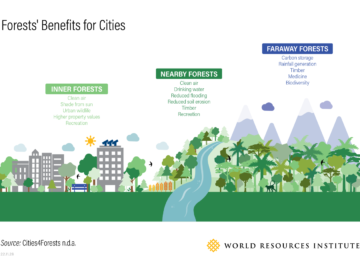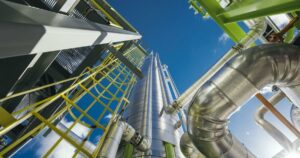
Many frameworks are available for architects and engineers to use best practices that support their clients’ ambitious climate goals. However, general contractors — the ones responsible for executing on and managing building projects — do not have similar guides or policies available for them to consult.
As the building industry continues to see a rise in climate action commitments — such as net-zero carbon emissions declarations — real estate developers are realizing they must engage their supply chain more actively to execute their goals. As a result, general contractors and their subcontractors should see this as an opportunity to be thought leaders.
Some general contractors see their role as solely to build what has been designed within schedule and within budget. However, general contractors should seize this opportunity to help real estate companies and the building industry by helping them quantify their Scope 3 emissions and serving as a bridge between their clients and subcontractors.
As someone who has worked in the construction field and helped project managers with their on-site GHG emissions accounting, I believe it is important that project owners and developers understand what should be considered at the beginning of any commercial real estate project to engage general contractors. Here are some suggestions.
Set goals in the RFP
When creating requests for proposals (RFPs) for projects, it is important to set goals clearly that align with your corporate sustainability reporting.
If you are interested in tracking emissions from the supply chain, you must be very clear what boundary you would like included: Do you want to know the emissions of the general contractor’s on-site operations (energy use of trailers, water use for dust suppression, company-owned vehicles used on-site) or do you want emissions of specific trades/subcontractors on the project?
I see an increasing number of clients asking for CDP reporting to track their supply chain emissions. This is a great starting point to start having general contractors track their emissions.
Consider their business workflow
Similar to how frameworks for architects and engineers reconsider their workflow when decisions around sustainability need to be considered, the same consideration applies for engaging with general contractors.
For the sake of simplicity, general contractors often will use a preconstruction team and an on-site management team to work on projects. Ideally project owners should request that the preconstruction team price materials and approaches that will help reduce GHG emissions.
This oftentimes requires feedback from the architects and consultants (life-cycle assessors) to develop practical alternatives for the project. When receiving bids from subcontractors, clients should be presented with estimates that include the impact on GHG emissions of traditional approaches as well as alternatives.
Consider the type of contract
Input from the general contractor and its subcontractors will be required to assess greenhouse gas emissions in their supply chain. Receiving input from the general contractor and subcontractors earlier in the project will be dependent on the project delivery method — design-bid-build, design-build or 3P (production, preparation and process). If it’s a design-bid-build contract, most general contractors will be involved after the design phase and are starting their bidding process based on the drawings. As a result, there is minimal opportunity for them to make changes to the materials selected for a project’s design.
The construction projects for which I have helped with GHG accounting have used either a design-build or 3P method. If a real estate company wants to start accounting for Scope 3 upstream emissions, the type of contracts signed with consultants will definitely matter.
Engage subcontractors and on-site personnel
It is also imperative that a plan is developed with the subcontractor’s project managers and the project engineers that oversee those subcontractors.
For example, a project engineer may oversee a specific trade (pre-cast concrete or steel). The building owner or developer must be very clear what information is needed from them. For example, if steel is being collected and recycled and credited back to the project, what is the process/travel involved and what GHG emissions resulted from sending steel back to the scrapyard?
In my experience, it is definitely possible to gather more detailed GHG emission information for construction sites — an important consideration as more companies set net-zero goals and move to get more clarity about their Scope 3 emissions. It starts with acting early to set expectations and spending time with preconstruction teams, bidding teams and site personnel to understand how a construction site operates.
Source: https://www.greenbiz.com/article/engaging-general-contractors-achieve-climate-goals









